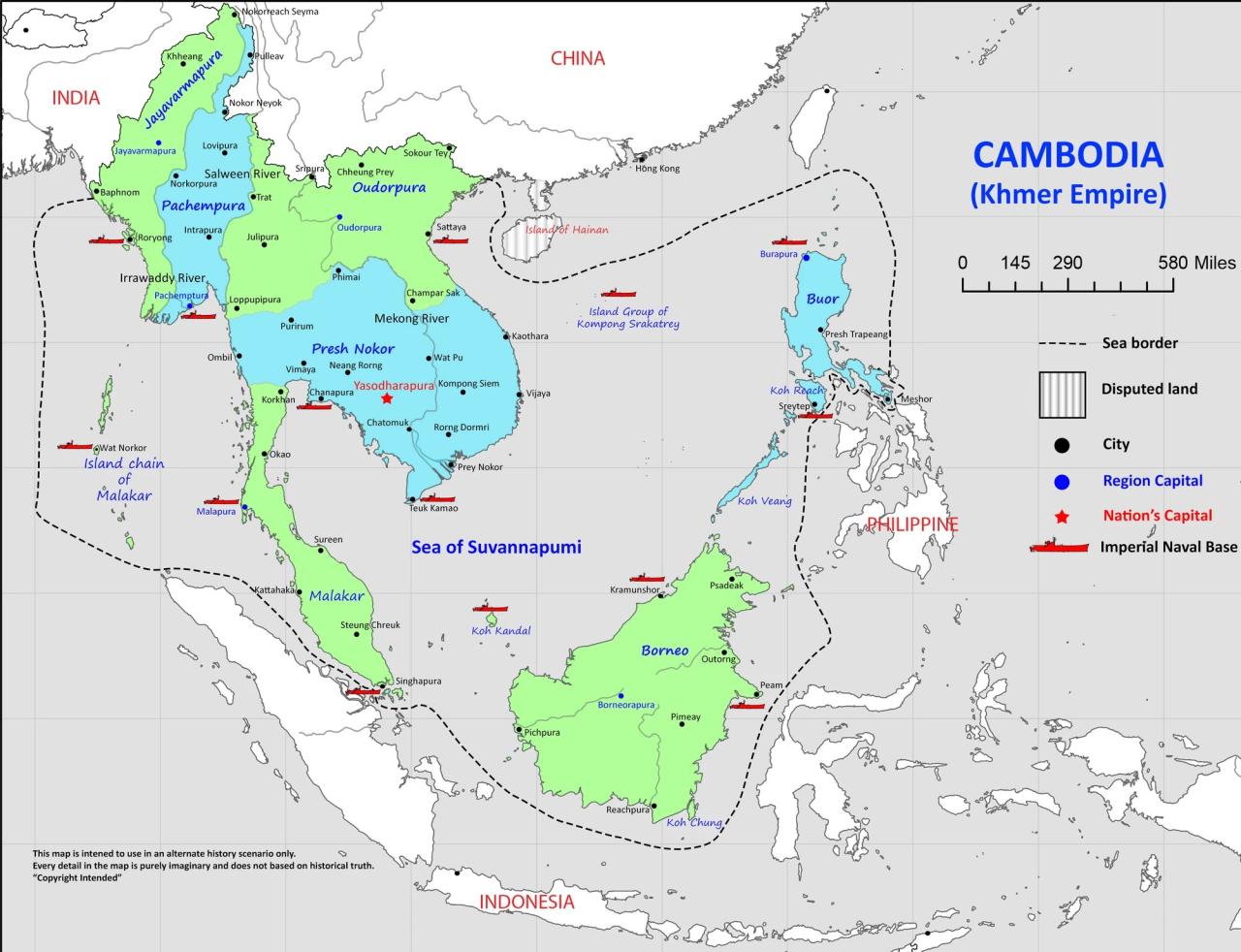Delving into the khmer empire definition ap world history, this exploration unveils the captivating narrative of a once-mighty empire that left an indelible mark on Southeast Asia. From its origins to its architectural marvels and eventual decline, this comprehensive overview unravels the intricate tapestry of the Khmer Empire, inviting readers to delve into a world of historical significance.
The Khmer Empire emerged as a formidable power in the 9th century, its influence extending across present-day Cambodia, Thailand, Laos, and Vietnam. The empire’s political structure, economic prowess, and cultural achievements left a lasting legacy that continues to inspire awe and admiration.
Definition and Origins of the Khmer Empire
The Khmer Empire, also known as the Angkor Empire, was a powerful and influential kingdom that ruled over much of Southeast Asia from the 9th to the 15th centuries. The empire’s geographical location, situated in the fertile plains of the Mekong River delta, played a significant role in its rise and prosperity.
The origins of the Khmer Empire can be traced back to the Funan Kingdom, which emerged in the 1st century AD. Over time, the Funan Kingdom expanded its territory and influence, eventually giving rise to the Khmer Empire. The empire reached its peak during the reign of King Jayavarman VII (1181-1218), who presided over a period of great territorial expansion and architectural achievement.
Political Structure and Administration

The Khmer Empire was a highly centralized monarchy, with the king holding absolute power. The king was assisted by a complex administrative system, which included a council of ministers and a bureaucracy that managed the empire’s vast territory.
The empire was divided into provinces, each governed by a royal official. These officials were responsible for collecting taxes, maintaining law and order, and overseeing public works projects.
Economic and Social Life
The Khmer Empire was a prosperous and economically diverse society. Agriculture was the mainstay of the economy, with rice being the primary crop. The empire also engaged in extensive trade with neighboring kingdoms and with China and India.
Khmer society was highly stratified, with the king and his family at the apex. Below the royal family were the nobles, who held positions of power and influence. The majority of the population consisted of peasants, who worked the land and paid taxes to the state.
Cultural Achievements

The Khmer Empire was renowned for its cultural achievements, particularly its architecture and sculpture. The empire’s most famous architectural achievement is the Angkor Wat temple complex, which was built in the 12th century and is one of the largest religious monuments in the world.
Khmer sculpture is also highly distinctive, with its characteristic elongated and graceful figures. Khmer artists produced a wide range of sculptures, from small statuettes to large-scale reliefs.
Decline and Fall of the Khmer Empire
The Khmer Empire began to decline in the 13th century, due to a combination of factors, including environmental changes, political instability, and warfare with neighboring kingdoms.
In 1431, the empire was sacked by the Ayutthaya Kingdom of Thailand, and the Khmer capital of Angkor was abandoned. The empire continued to exist in a diminished form for several more centuries, but it never regained its former glory.
Legacy of the Khmer Empire: Khmer Empire Definition Ap World History

The Khmer Empire left a lasting legacy on Southeast Asian history and culture. The empire’s architectural achievements, such as Angkor Wat, continue to attract visitors from around the world.
The Khmer Empire also played a significant role in the spread of Buddhism in Southeast Asia. The empire’s influence can still be seen in the religious practices and cultural traditions of many Southeast Asian countries.
FAQ Summary
What is the geographical extent of the Khmer Empire?
The Khmer Empire’s influence extended across present-day Cambodia, Thailand, Laos, and Vietnam.
What factors contributed to the rise of the Khmer Empire?
The rise of the Khmer Empire was influenced by a combination of factors, including a favorable climate, access to natural resources, and a strong leadership.
What is the significance of Angkor Wat?
Angkor Wat is the largest religious monument in the world and is considered a masterpiece of Khmer architecture. It serves as a symbol of the empire’s power and cultural achievements.